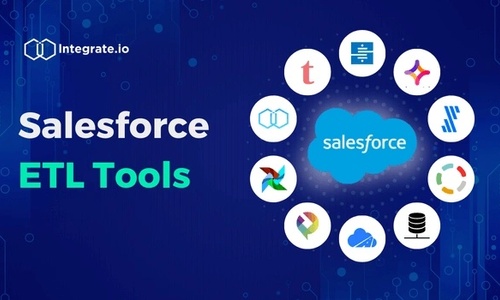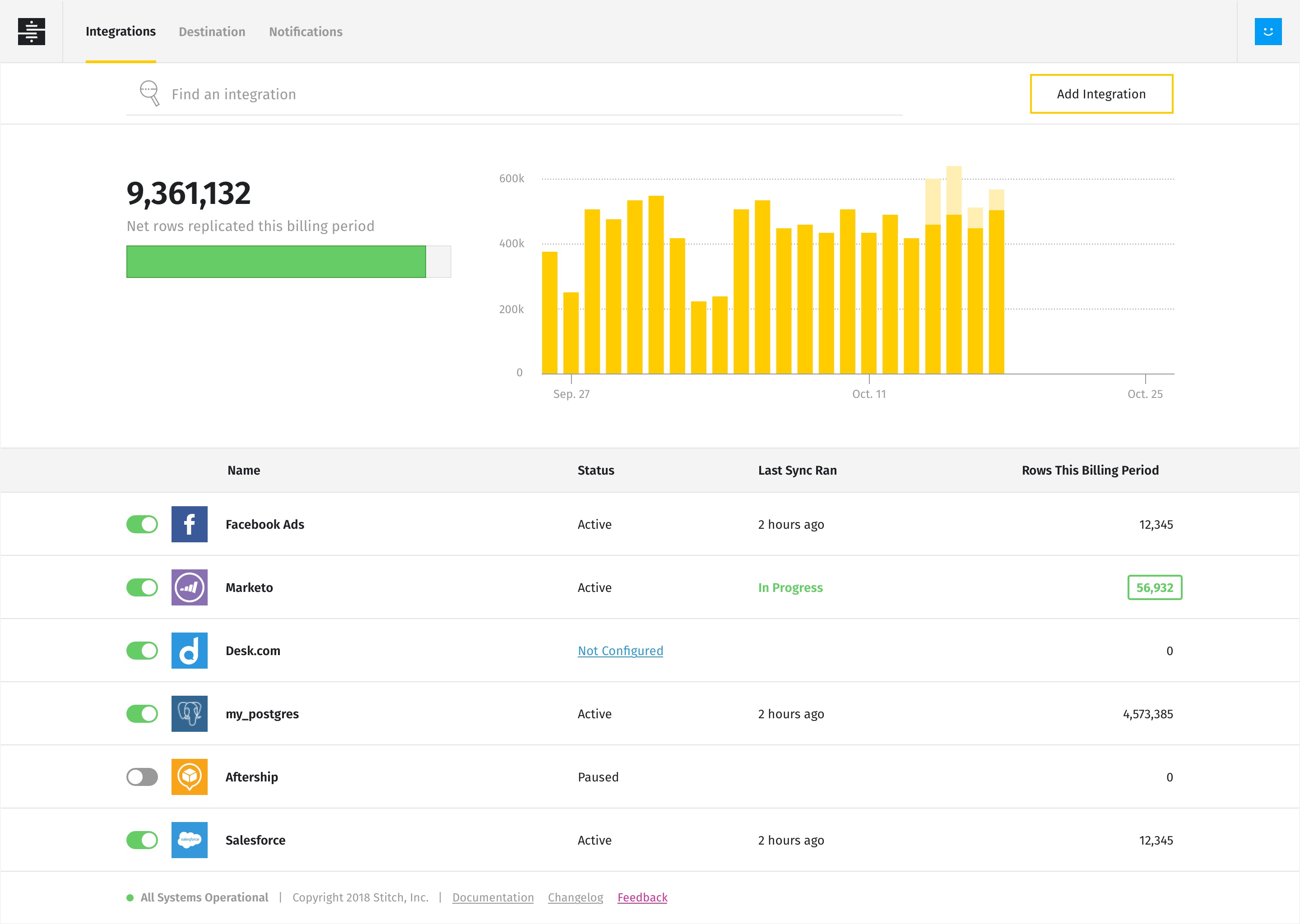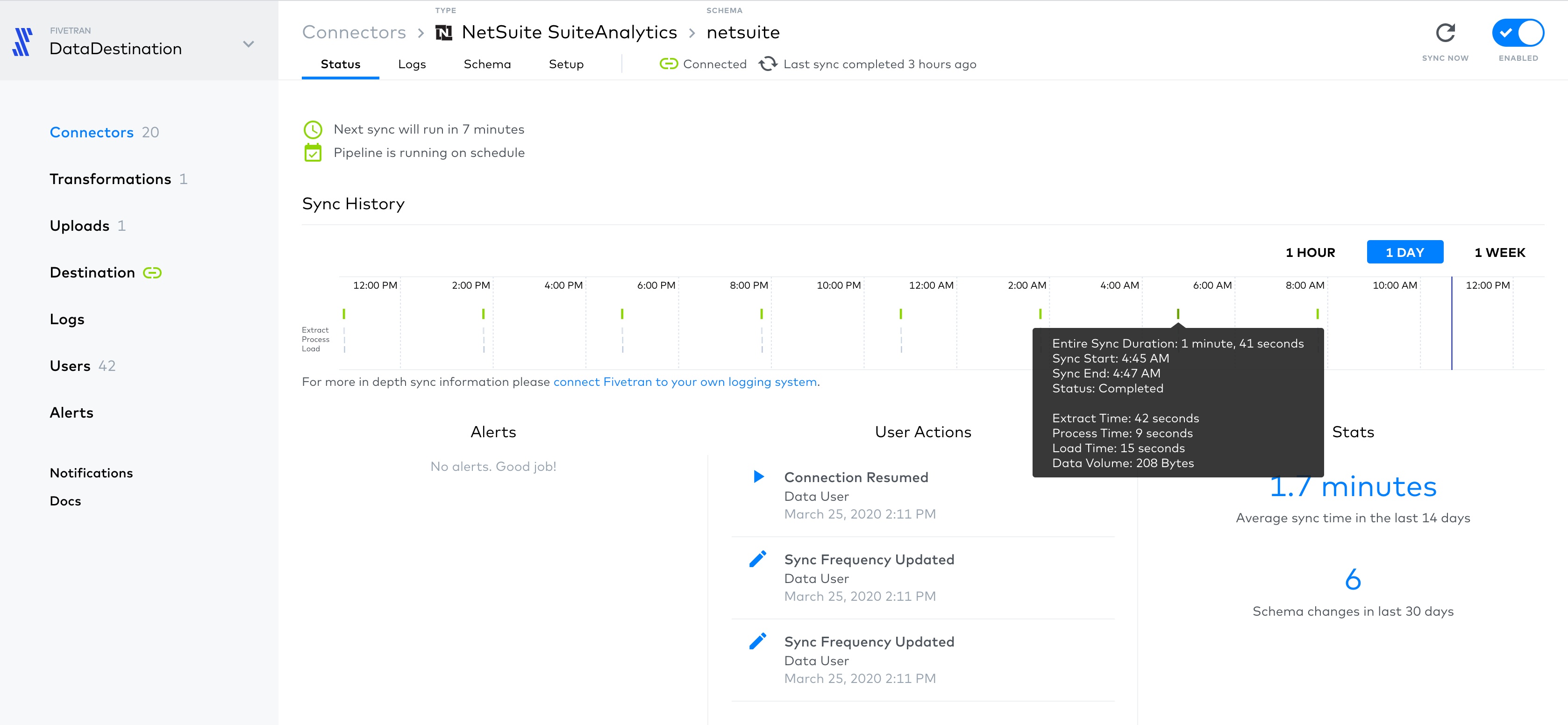Salesforce dominates nearly 24% of the CRM market in part because the customer-relationship management platform gives users a dashboard that makes it easy for them to store and track customer data. While Salesforce’s dashboard and other tools let users generate reliable reports quickly, businesses can gain even more real-time insights into customer tracking, order fulfillment, and other metrics by adopting no-code/low-code ETL solutions. Later, learn the 10 best Salesforce ETL tools. But first, find out the benefits of these platforms and how to choose one for your use case.
Five things to know about Salesforce ETL tools:
- Salesforce ETL tools extract data from Salesforce, transform the data into the most suitable format for data analysis, and push that data into a data warehouse.
- You can then analyze your Salesforce data in business intelligence tools.
- This process helps you make better decisions about your customers, sales, inventory, and other factors.
- Some of the best CRM ETL tools for Salesforce include Integrate.io, Fivetran, and Talend.
- Think about features, coding requirements, pricing, and security when choosing a Salesforce ETL tool.
In this article, you'll learn more about the benefits of using Salesforce ETL tools and how to select the right one for your needs.
What are ETL Tools for Salesforce?
A CRM ETL tool for Salesforce moves data from the CRM platform to a central repository like a data warehouse so you can generate analytics about your business and make better decisions.
The Benefits of Using Salesforce ETL Tools
Combining Salesforce with an ETL solution can give sales, marketing, and product development teams a deeper understanding of the data they collect. For example, a sales team that wants to segment its customers into detailed categories may need to combine Salesforce data with information from other CRMs, such as Insightly, HubSpot, or Freshdesk. Before sending data from multiple sources to a data analytics app, they need to reformat the information for consistency.
A reliable ETL solution can combine information from Salesforce data warehouses and other CRMs, reformat big data and load it to a common destination. Within a few minutes, the sales team can gain a better understanding of what their customers want.
Straightforward best ETL tool for Salesforce can also give you more control over your Salesforce data by pulling information from the CRM and loading it to an external data warehouse like Amazon Redshift.
For more information on our native Salesforce connector, visit our Integration page.
Choosing Salesforce ETL Tools
Salesforce data needs differ from company to company, so it’s impossible to say what exact features you should look for when choosing an ETL solution. There are, however, some features that most organizations prefer when moving and analyzing Salesforce data.
Some of the most essential features to consider include:
- No-code and low-code environments that don’t require technical backgrounds.
- Abundant integrations with databases, data warehouses, other CRMs, and business intelligence apps.
- Security standards that comply with regulations established by HIPAA, CCPA, GDPR, and other laws.
- An intuitive user interface that makes it easy to build data pipelines for successful data migration and optimize the ETL process.
With those factors in mind, let's explore your ETL options for use with Salesforce.
1. Integrate.io
Price: From $15,000/year with the option to Try Before You Buy
Tool type: Cloud-based
Customer rating: 4.3/5 (G2)
Key features:
- 200+ data connectors
- Field-level encryption security
- Elastic and scalable
- Drag-and-drop interface
Integrate.io appeals to both experienced data analysts and beginners that want to use data from Salesforce for marketing and sales projects because it takes a no-code approach when building data pipelines. The platform uses a drag-and-drop visual interface that lets users extract data from Salesforce, transform the data, and load the information to a source without learning any code.
Users with some coding experience can write low-code scripts that perform unique tasks. Even professional programmers will appreciate the time-saving capabilities of a low-code ETL platform that doesn’t require a lot of coding to get accurate results from Salesforce data.
Integrate.io integrates with Salesforce databases and data warehouses. By adding Integrate.io to your suite of software, you can modify data before sending it to other databases like MySQL, Amazon Redshift, and Google BigQuery--or even back into Salesforce with a two-way integration feature that's typically not available at this price point.
Adopting Integrate.io also lets you extract data from Salesforce and send it to robust business intelligence tools like Chartio, Looker, and Periscope Data. Once you load data into these popular analysis and BI apps, you can more easily interpret the information and apply the results to your product development, market strategies, research, and sales projects.
2. Talend
Price: Not published
Tool type: Cloud-based/on-premises
Customer rating: 4.4/5
Key features:
- 1,000+ data connectors
- Strong data governance
- API creation
Pros
Talend has ETL features that some data professionals will find appealing. Benefits of Talend include strong data governance and features useful to large enterprise clients.
Cons
Unfortunately, Talend doesn’t work well for most marketing and sales teams because it requires extensive technical abilities. A company that has a large group of employees dedicated to developing security software might not mind the high level of technical experience that the platform demands. However, the typical user of Salesforce data does not usually have a technical background. If all you want is to process the data in order to make marketing and sales decisions, there are more user-friendly data integration tools out there.
3. Stitch
Price: ETL features are available on plans starting from $1,250/month
Tool type: Open-source, cloud-based
Customer rating: 4.5/5
Features:
- Automation functionality
- ETL monitoring
- Troubleshooting guides
Pros
Stitch has a lot of great features that can pull and analyze data from Salesforce. Like Talend, which owns Stitch, it requires a deep level of technical experience. If you have team members that know how to write custom code, you can use Stitch's automation functionality to extract, transform, and load Salesforce data to your Stitch account.
Cons
Stitch doesn't allow you to set up automated BI report generation, which can make the process more time-consuming, and unless your sales and marketing teams know how to code, they will likely not have much use for the platform. Developers or cloud data and software professionals will likely enjoy writing code that gives them full control over Salesforce data, but you would need to hire them first.
4. Jitterbit
Price: Not published
Tool type: Open-source, cloud-based
Customer rating: 4.6/5
Features:
- Works with various databases
- Easy-to-use interface
- Troubleshooting guides
Pros
Jitterbit is an open-source ETL tool developed by a member of Salesforce AppExchange. It works well with MySQL, SQL Server, and Oracle databases.
Cons
Unfortunately, it doesn’t offer as many integrations as Integrate.io, Talend, and other privately owned ETLs. Additionally, companies that choose Jitterbit because it is an open-source, no-cost platform quickly learn that saving money means that they don’t have access to many customer service options.
When you eventually encounter a problem with Jitterbit, you will have to rely on existing documentation and other users for help. Compare that to some of the other Salesforce-integrated platforms like Integrate.io, which gives you access to 24/7 assistance as well as a knowledge base, webinars, and a growing blog of useful articles.
5. Fivetran
>Price: Not published
>Tool type: Cloud-based
>Customer rating: 4.2/5
>Features:
- 100+ data connectors
- Open source
- Reporting and logging
Pros
Fivetran, like other Salesforce ETL tools, integrates easily with Salesforce, as well as more than 100 other apps, it connects to the most commonly used data warehouses, and it has a no-code platform that anyone can operate regardless of their technical training.
Cons
The biggest drawback to choosing Fivetran is that it only functions as an ELT, which means it cannot transform data between the source and the destination. Instead, you have to extract, load, and transform your data. This is a significant issue for people looking for flexibility, security, and ease of use. Since ELT forces you to move data before transforming it, you might find it difficult to comply with regulations established by GDPR or CCPA, just to name a few.
6. Blendo
Price: From $150/month
Tool type: Cloud-based
Customer rating: No G2 rating available
Features:
- ETL job scheduling
- Loads to multiple warehouses
- Schedule ETL jobs
Pros
Blendo gives you a lot of useful ETL tools for Salesforce. You can set a schedule that will automatically transfer data from Salesforce to your chosen destination, which means you don’t have to waste time recreating data pipelines that you use frequently. Blendo also integrates with a lot of data storage destinations, including Redshift, MS SQL, Amazon Redshift, and PostgreSQL.
Cons
Overall, Blendo has been well-received. However, it is important to note that Blendo refreshes every 15 minutes and does not show the progress of a first-time import.
7. dataloader.io
Price: From $99/month (free plan available)
Tool type: Cloud-based
Customer rating: 4.2/5
Features:
- Focuses on Salesforce ETL jobs
- Support for large files
- Drag-and-drop capabilities
Pros
Salesforce worked with MuleSoft to create dataloader.io. Salesforce’s involvement means that you get a quick, user-friendly approach to transferring data from the CRM to the data warehouse or database of your choice.
Cons
Many users, however, will find that dataloader.io focuses too much on Salesforce. Obviously, you want a great way to move your Salesforce data, but what about the data that you get from other sources? If you have multiple data sources, dataloader.io may not be the best option because it doesn’t give you as many integration options as other platforms like Integrate.io.
8. Skyvia
Pricing: From $15/per month
Tool type: Cloud-based
Customer rating: 4.7/5
Features:
- Integrates with multiple sources
- Extracts data from e-commerce sources like Shopify
- Cloud data back-up
Pros
Like Jitterbit, a member of Salesforce AppExchange developed Skyvia. Skyvia Data Integration for Salesforce can connect your Salesforce data to a long list of sources, including MySQL, SQL Azure, BigQuery, and Redshift. The cloud-based ETL solution can also extract data from Magento, Shopify, and BigCommerce, which makes it more useful than Jitterbit or dataloader.io.
Cons
The problems begin when you ask non-tech employees to use Skyvia. Its app is API-only, so it doesn’t come with a user interface. It is likely your sales and marketing employees will find it difficult or even impossible to benefit much from Skyvia. Your analytics team, however, will probably like it.
9. Panoply
Pricing: From $299/per month
Tool type: Cloud capabilities but requires on-prem data storage
Customer rating: 4.5/5
Features:
- Low code
- Lots of integrations
- Fast implementation
Pros
Panoply takes a simple approach to Salesforce data ETL with a low-code platform that integrates with popular destinations, including databases, data warehouses, and business analytics apps. The platform can also make it easy for your team to store and find the information they need to make data-based decisions.
Cons
Given these features, why wouldn’t everyone choose Panoply? Because it requires on-premises data storage. Your business will need to invest in equipment that keeps all of your information at the office. On-premises data storage can also make it difficult for employees to access information remotely. If members of your team plan to work from home, then you will need to find a way to give them access.

10. Airflow Plugin
Pricing: Free
Tool type: Plugin
Customer rating: 4.3/5
Features:
- Works well as an ETL manager
- Schedules ETL jobs
Pros
Apache Airflow is a plugin that lets you extract and transform data sets from Salesforce before loading it to Redshift or Amazon S3. It works incredibly well as an ETL manager that will automate much of your team’s work.
Cons
If you're at all familiar with Airflow, then you already know it's major flaw: it only loads data to Amazon data warehouses and databases. That restriction alone has caused a lot of companies to look elsewhere for their ETL solutions.
Airflow also suffers from an open-source approach that requires significant coding experience. Web and software developers won’t struggle with Airflow. Anyone without a tech background, however, will give up on the ETL tool quickly. For most organizations, it makes more sense to choose a no-code or low-code ETL platform.
How Integrate.io Can Help With Salesforce ETL
There is a wide range of Salesforce ETL tools and solutions, each of which offers its own unique benefits. However, a couple of CRM ETL tools rise above the rest in terms of automatization and ease of use.
Because of its high-value Salesforce integration, low-code ease of use, cloud-based flexibility, and staunch commitment to data security, Integrate.io is certainly one of the best ETL tools to use for data management and data transformation with Salesforce. You can extract data from Salesforce, transform it to the correct format, and load it into a data warehouse seamlessly without data engineering experience, making the platform a good fit for all types of businesses.
As well as being one of the best Salesforce ETL tools, Integrate.io also:
- ETLs and Reverse ETLs data from various sources in minutes without any code via a powerful drag-and-drop interface.
- Performs ELT and Change Data Capture (CDC). Integrate.io is the fastest ELT data replication tool in the industry and can unify your data sets every minute for a single source of reporting truth.
- Lets you improve API management by creating a self-hosted and secure REST API without code. You can instantly write and read REST APIs and get more value from your data products.
- Optimizes data observability with custom alerts and monitoring, giving you more confidence in your data quality.
Struggling with Salesforce data integration? See how we can ease your data pains when you try Integrate.io for yourself with our 14-day free trial. Visit our ETL Trial Signup page, then schedule an ETL Trial Setup meeting, where someone from our team will walk you through how to make the most of your trial. Alternatively, if you have unique data migration or integration challenges, schedule an intro call with a specialist who will identify your pain points and talk to you about potential solutions one-on-one.



























